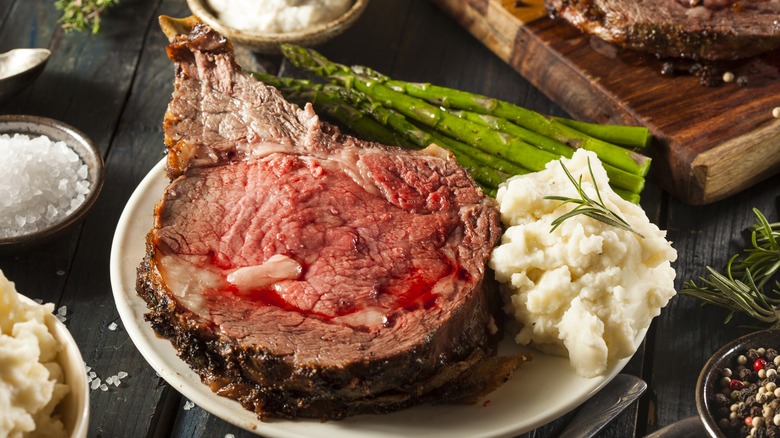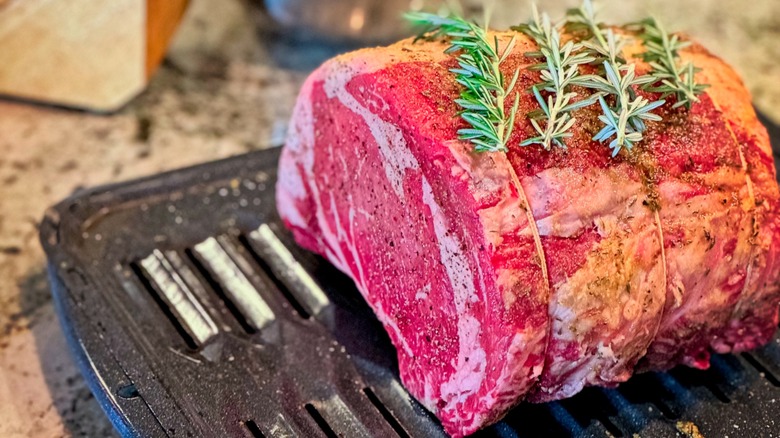Here's How To Cook Up Juicy Prime Rib At High Altitude
We may receive a commission on purchases made from links.
A tender ribeye will satisfy most steak enthusiasts, but a thick, juicy slice of prime rib will send them over the moon. It hits every note a meat lover wants to experience — as long as it's moist and not overcooked. Dryness is the arch nemesis of beef, and when roasting it at high altitude, the risk of ruining that treasured piece of the rib primal becomes a genuine concern.
The Takeout spoke with Michael Goralski, executive chef at Steadfire Chophouse at Four Seasons Resort Jackson Hole, Wyoming, about the nuances surrounding prime rib cooked at high altitude. He explained that the difference in atmospheric pressure can make keeping beef juicy a challenge. "At higher altitudes, air pressure is lower and causes moisture to escape more quickly, which can make the meat dry out," Goralski said.
Goralski is well acquainted with cooking at high elevation, given that Jackson Hole sits at over 6,000 feet. His tip for keeping prime rib juicy at higher altitudes is so simple it likely gets overlooked far too often. "This can easily be combated by wrapping the prime rib in foil to lock in the moisture," Goralski said. It's also beneficial to mimic how folks keep a Thanksgiving turkey moist. "Basting the meat while cooking can also help," he added, as does allowing the roast to rest for about half an hour after it comes out of the oven so the juices can redistribute.
Add flavor to prime rib while retaining moisture
Whether you buy frozen prime rib or the best prime rib in the grocery store, if it's not covered while roasting at high altitude, it's bound to lose some of its precious juiciness. Still, even when it's enveloped in foil, it never hurts to help it stay saturated any other way you can. Chef Michael Goralski's suggestion not only moistens the beef but also amps up the umami factor at the same time. "I recommend starting with a high-quality cut with enough fat to keep the meat moist," he said. "Our version in Steadfire Chophouse uses tallow (rendered beef fat) to lock in flavor, add moisture while cooking, and enhance the flavor."
You can purchase beef tallow at some grocery stores right along with your prized protein. Still, all the tricks in the world won't prevent it from drying out if it's overcooked. Medium-rare prime rib needs to be roasted to between 120 and 125 degrees Fahrenheit, and Goralski insisted that there is only one way to hit the mark. "A meat thermometer is the best bet, as it gives an accurate temperature for the middle of the meat," he explained.
If you don't already own a quality meat thermometer, it's imperative to get one before attempting to cook prime rib — at high altitude or otherwise. This Alpha Grillers Meat Thermometer allows you to roast your beef to the perfect temperature every time. It won't set you back much, and considering how much you'll likely pay for raw prime rib, it's well worth the investment to make sure it comes out juicy.

